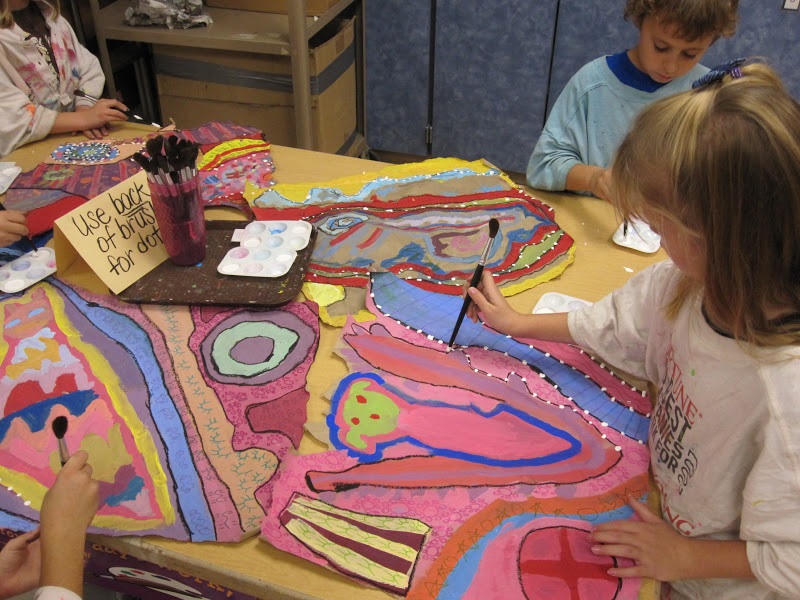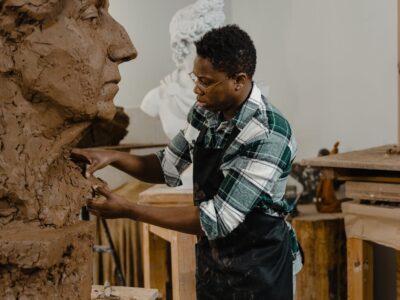Creative art and art forms of all kinds have fascinated people from time to time. Especially, if you are an art lover, the desire to delve into multiple art variants is a secret calling.
Interpreting art and discovering its back story not only helps a person to know about the art form, the artist, the social setting but also the ethos and essence that underlines the artwork. One of the art forms that have gained popularity and has intrigued many is the original art form.
Not many seem to understand or interpret this art form, even though they might get attracted. The question of “Am I interpreting it correct” always pops up in the mind of an art-lover, who’s just beginning to take an interest in art.
Hence, before you delve deep in this art form, it is essential to know a few essential aspects about it.
Ways to understand aboriginal art forms
Every viewer wants to appreciate aboriginal artworks. But before that, it is important to know a few techniques that will enable you to understand aboriginal art in a better way.

- There are no strict rules to follow
Every person would love to have a structure following which he can appreciate aboriginal art form, akin to most paintings and other artworks. However, here there is a slight contradiction.
The term “Aboriginal” itself comprises of multiple aspects from varied cultures which have undergone varying degrees of colonization. You can interpret the dot in a certain way in an aboriginal art form that belongs to the Western Desert.
Similarly, the same dot will have a different meaning in an artwork that belongs to the Arnhem Land. The best way out here is to conduct in-depth research about these elements and the cultural background. You can base your interpretations based on your research material and the insight that you develop from it.
Alternatively, you can also seek guidance from an aboriginal art interpreter and learn about different factors that govern this art form.
- Art can be best defined as cultural knowledge and has immense power
Aboriginal art has been used in several schools to teach about several exciting concepts. It is true for the younger generations and the ones who are uninitiated.
Right from the accumulation of the art materials, that might include several days, weeks and months of preparation, becoming an expert on the know-how and planning.
For instance, an aboriginal art work that belongs to the West Arnhem Land, done by the Kunwinjku people will have its own preparation time. There can be baskets and other artworks that require many natural dyes and other natural fibers.
You need to prepare both before creating the basket. Even though most of it is invisible to the eye, there’s ample amount of cultural know-how that also is required to make the artwork.
When teachers teach this to the younger generation, they develop a better understanding of aboriginal art and artworks.
- The artworks used to depict countries
Several indigenous art forms depict countries. However, the way they do it might be complicated for the people to decipher and get convinced. The know-how taken from the formal painting aspects often gets imposed on the artworks for appreciating the same.
Without any vanishing points and the horizons, the beautiful and creative aboriginal art forms generally tend to have similarity with Minimalism and Abstraction. The meaning of the aboriginal art forms extends beyond its formal aspects.
And it usually, comprises of several meaning layers that can be viewed only by the artists as well as the senior law-men.
- Aboriginal art form is a contemporary art form
One might have qualms of doubts of accepting aboriginal art form as a modern piece! However, the claim holds true. The Australian aboriginal today is known to be the longest flourishing cultures.
And over the years it has continuously grown and evolved. This evolution is all reflected in its art forms and artwork. Just like any art piece that belongs to the western countries have to undergo its own unique movement; even Australian aboriginal art too had to undergo the same stages.
For instance, the epic dot painting pattern, that uses acrylic paint on canvas has been sourced from the Western Desert. It was practiced since the first half of the 1970s.
The truth is aboriginal art form is not static. It always undergoes expansion and evolution. It is essential to know that aboriginal art forms are constantly integrating various techniques, exploration as well as materials in the brand-new media in the world of indigenous art, similar to the genre of contemporary art forms.
Hence, it’s essential that you keep exploring other art forms and along with aboriginal art forms. This way you can also come across the brand-new forms that exist in aboriginal art forms as well.
One of the best ways to do that is visiting galleries that exhibit aboriginal art forms on a daily basis. You can also read interesting newsletters and news updates online on aboriginal art to stay updated on its development.
- Ensure that you purchase in an ethical way
If there is any grey area that needs to be worked upon in aboriginal art form, then it’s the exploitation. Right from the early collectors as well as the anthropologists and the modern-day galleries, unethical purchasing of aboriginal art forms has been a reality.
When you choose to purchase from the street or market stall might become very risky. It is because you can never be sure on who had made the art work and the painting. You also need to be certain of who is getting a fair deal and whether the conditions in which the artist had painted the work, is conducive or not. For this, you need to do in-depth research.
The reason why you need to take an extra effort to understand and decipher aboriginal art is because it is unique. The theories and ethos behind an aboriginal art form is lofty and has layers of meanings. You need to keep the pointers mentioned above in mind if you want to appreciate an aboriginal art form in its authenticity.













Comments